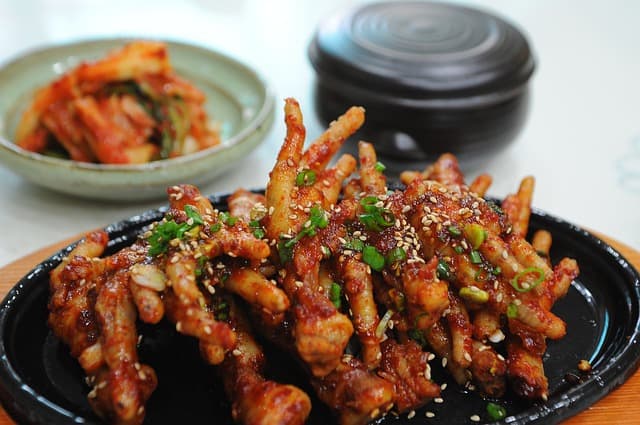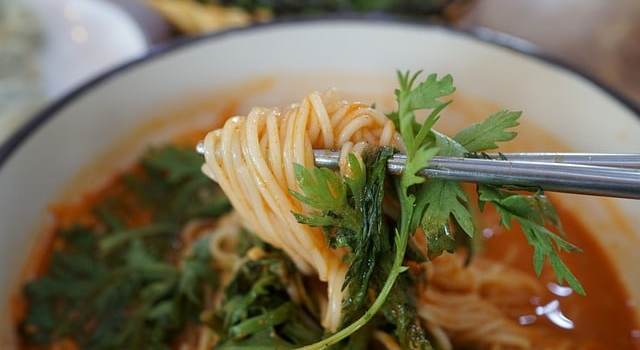One of the first ways that I began to learn Chinese characters was by encountering them in restaurant menus. Many restaurants in China include English translations on their menus, but there are still plenty of places where this is not the case. The game is to go, select something randomly, and when the food comes, you have the opportunity to learn some new characters! While there is quite a bit of “risk” involved in this process, it was a triumph for me when I first began to recognize the characters for noodles (面, miàn), rice (饭, fàn), and chicken (鸡肉, jī ròu). I also learned when to avoid marinated duck head (卤水鸭头, lǔ shuǐ yā tóu) and chicken feet (凤爪, fèng zhǎo).

For those of you not living in China, it may be a little bit more difficult to locate Chinese menus, but here are a few you can look at with pictures: Menu 1 , Menu 2 , Menu 3
My feelings towards menus without English translations have been a little different to Bethany’s ‘risk-taker’ attitude. Generally, doing an ‘ip dip’ style of choosing dishes randomly (as Bethany suggests above) has never been successful for me (often resulting in wobbly tofu and mushrooms, neither of which I eat) and always made me feel reluctant to try again.
I recently went to a hot pot restaurant with my other half whose spoken and written Chinese far exceeds mine. I really enjoy hot pot, but the menu is almost entirely in Chinese. Although the 服务员
was extremely helpful and tried to suggest some dishes for us, it’s not the same as seeing something on the menu that you’ve had before and thinking ‘that’s what I want!’ Although my 麻辣火锅 experience was pretty good, I was still curious to know what was really on the menu.
Method 1: Using an OCR tool to read Menus
An OCR is a tool that can scan Chinese characters and give you an instant translation. Pretty cool, right? Using the tool to scan menus is just one of the many ways the tool is both useful and essential for Chinese learners.
Just tap the second icon from the right and hover over the text you want to scan. As you can see in the image above, the OCR will instantly give you a translation of the characters. However, if you want to ‘look up’ the characters, just tap on the ‘Look it up’ button at the bottom and you’ll go to the second screen. You can also scan a photo or picture from your phone’s gallery.
From here you can do all manner of things including the following:
- Click on the bigrams or individual characters to find out more.
- Add the bigram or character to your flashcard Quicklist (which can now be backed up).
- Go to the Chinese Reader
The Chinese Reader allows you to view characters in a row as they were scanned instead of individually listed. You can turn off the pinyin by tapping the button at the bottom of the screen.
This is a great tool to use when trying to read full sentences. You can just copy and paste a sentence into the Search bar and tap ‘Go To Chinese Reader’.
The next method is more challenging and satisfying, because not only are you translating a menu, but you’re also practising your character strokes (which can sometimes be no easy feat!):
Method 2: Handwriting the Characters into the Dictionary
First, in order to do any kind of Chinese handwriting you need to have a handwriting tool on your mobile device.
If you’re not sure how to do this you can follow Nora’s easy peasy instructions to finding a handwriting tool for your Android device, and my instructions for your iOS device.

To find out what meals the menu offers just begin to draw the strokes onto the keyboard. Tap on the character when it appears in the bar in the middle of the screen. Depending on your device, the keyboard may predict which character it is you’re looking for before you even type it. When you’ve completed all the characters tap ‘Search’ or 搜索 and the dictionary will provide you with a breakdown of the bigrams and characters.
Whichever method you choose to follow to learn to read them, menus are definitely a great way to learn Chinese characters!
Additional Resources:
The Eater’s Guide to Chinese Characters by James D. McCawley
The Mysterious Impact Food Can Have on the Body (according to TCM)
